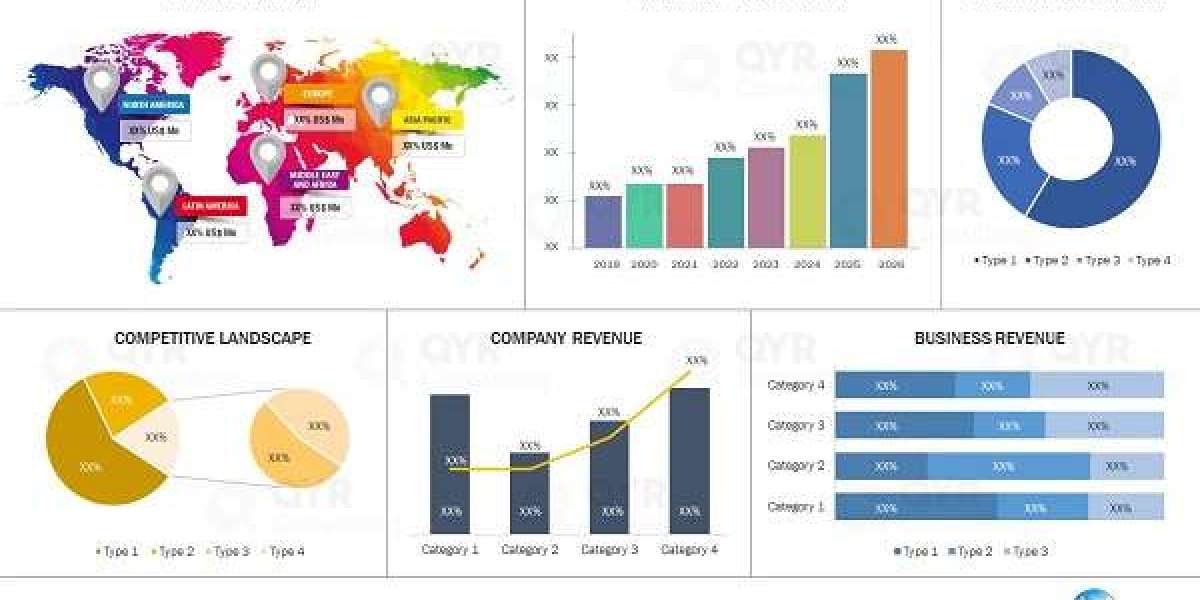The global Industrial Sun Sensors for Space market was valued at US$ 38.5 million in 2024 and is anticipated to reach US$ 80.2 million by 2031, witnessing a CAGR of 11.2% during the forecast period 2025-2031.
The global Industrial Sun Sensors for Space market is experiencing strong momentum as the commercial space industry, small satellite manufacturing, and deep-space exploration programs continue to scale. Sun sensors are critical attitude determination devices that detect the position of the Sun relative to a spacecraft. They provide angular reference data that allows satellites, probes, and other space platforms to orient solar panels, stabilize payloads, and maintain proper pointing accuracy. As more satellites are launched for Earth observation, communications, navigation, and scientific missions, demand for reliable, radiation-hardened, and low-power sun sensing solutions is steadily increasing through 2031.
Read Full Research Report: https://www.qyresearch.in/report-details/1768304/Global-Industrial-Sun-Sensors-for-Space-Market-Insights
Market Overview
Industrial sun sensors for space are specifically designed to meet aerospace-grade requirements, including radiation tolerance, thermal stability, and long-duration performance in harsh orbital or deep-space environments. These sensors are deployed on low Earth orbit (LEO) satellites, medium and geosynchronous Earth orbit spacecraft, scientific observatories, planetary probes, and lunar and Mars missions. Their role is mission-critical: loss of accurate Sun vector information can lead to inefficient solar panel alignment, degraded power generation, thermal imbalance, and even loss of spacecraft attitude control.
Historically, high-reliability sun sensors were limited to government agencies and large prime contractors. Today, the rapid expansion of the commercial space economy — driven by constellations of smaller, lower-cost satellites — is opening new opportunities for standardized, modular, industrial-grade sun sensors that balance performance, mass, and cost.
Key Market Drivers
- Growth of small satellites and mega-constellations
The number of satellites launched annually has surged due to Earth imaging, broadband connectivity, climate monitoring, and defense and security applications. Many of these spacecraft operate in LEO and require compact, power-efficient attitude control systems. Industrial sun sensors offer a lightweight and cost-effective solution for coarse-to-medium accuracy attitude determination, making them highly attractive for mass-produced satellite buses. - Rising demand for spacecraft pointing accuracy
High-value missions such as hyperspectral imaging, SAR (synthetic aperture radar), laser communications, and high-throughput optical payloads require stable and accurate pointing. Sun sensors are often used as part of hybrid attitude determination systems alongside star trackers, gyroscopes, and inertial sensors. Their ability to deliver continuous Sun angle data with minimal power draw increases overall pointing reliability, which is especially important during safe mode or recovery scenarios. - Expansion of lunar, cislunar, and deep-space missions
Beyond Earth orbit, spacecraft must maintain stable orientation for thermal regulation, solar charging, and payload targeting in extreme conditions. Industrial sun sensors designed for radiation-heavy and thermally variable environments are in growing demand for science missions, asteroid exploration, and lunar infrastructure support. As governments and private companies move toward long-duration operations beyond LEO, long-life sun sensing technology becomes even more strategic. - Increased emphasis on power management and survivability
For power-positive spacecraft design, solar array alignment is everything. Sun sensors enable optimized panel articulation and energy capture, extending mission life and supporting higher payload duty cycles. As operators push for longer mission endurance without major mass penalties, high-reliability sun sensors are seen as an enabling component for sustainable spacecraft power architectures.
Market Segmentation
The Industrial Sun Sensors for Space market can be segmented by sensor type, platform type, and mission profile.
By sensor type, the market includes analog sun sensors, digital sun sensors, coarse sun sensors, and fine sun sensors. Coarse sun sensors are typically lower cost and provide sufficient accuracy for basic orientation and safe mode operations. Fine or digital sun sensors deliver higher angular resolution and are used in missions that demand precise pointing performance.
By platform type, major segments include CubeSats and SmallSats, medium-class satellites, large GEO platforms, and exploration spacecraft. CubeSats and SmallSats form one of the fastest-growing segments because they require compact, standardized components with rapid qualification cycles — a sweet spot for modular industrial sun sensor vendors.
By mission profile, the market is divided into Earth observation, communications, scientific exploration, navigation, defense and surveillance, and interplanetary research. Earth observation and communications satellites currently lead in deployment volume, while exploration missions represent a high-value niche with stringent technical requirements and higher per-unit performance expectations.
Regionally, demand is strong in North America and Europe due to established aerospace ecosystems and ongoing government-backed science and defense missions. The Asia-Pacific region is also emerging as a major growth engine, driven by national space programs, private launch providers, and vertically integrated satellite manufacturers.
Technology Trends
Several important trends are shaping the next generation of industrial sun sensors for space.
First, miniaturization and standardization are accelerating. Manufacturers are designing sun sensors that can be integrated directly onto compact satellite buses with minimal harnessing, reducing mass and simplifying assembly.
Second, radiation-hard and long-life designs are becoming standard even for commercial missions. As LEO spacecraft are expected to survive longer in harsher orbital environments, demand is shifting toward sensors that maintain accuracy despite cumulative radiation exposure, thermal cycling, and contamination over time.
Third, digital and smart sun sensors are gaining share. These devices provide processed Sun vector outputs directly to the spacecraft attitude control system, reducing onboard processing burden. This is especially attractive for nano- and micro-satellites with limited compute budgets.
Fourth, suppliers are integrating sun sensors as part of bundled attitude determination and control subsystems. Instead of buying individual components, satellite builders increasingly source pre-qualified attitude control packages that include sun sensors, reaction wheels, magnetorquers, and control software. This bundling trend benefits trusted suppliers with flight heritage.
Challenges and Opportunities
The market faces several challenges. Qualification and flight heritage matter: satellite integrators and space agencies are highly risk-averse, which makes it difficult for new entrants to compete against established aerospace suppliers. Harsh operating conditions, including radiation bursts, thermal extremes, and optical contamination, also drive up engineering costs and certification timelines.
However, opportunities are significant. The commercialization of space, the surge in constellation deployments, and the shift toward mission modularity are creating demand for industrial-grade sun sensors that combine aerospace reliability with scalable pricing. The long-term move toward lunar logistics, in-orbit servicing, autonomous navigation, and persistent observation platforms will continue to widen the addressable market.
In summary, the Industrial Sun Sensors for Space market is set for steady expansion through 2031, powered by satellite proliferation, deep-space ambitions, and the growing need for precise, power-efficient spacecraft orientation. Companies that deliver radiation-tolerant, compact, digitally integrated sun sensing solutions with proven flight heritage will be in a strong competitive position in the coming years.
QY Research established in 2007, focus on custom research, management consulting, IPO consulting, industry chain research, data base and seminar services. The company owned a large basic data base (such as National Bureau of statistics database, Customs import and export database, Industry Association Database etc), expert’s resources (included energy automotive chemical medical ICT consumer goods etc.
Contact Us:
QY Research, INC.
315 Work Avenue, Raheja Woods,
Survey No. 222/1, Plot No. 25, 6th Floor,
Kayani Nagar, Yervada, Pune 411006, Maharashtra
Tel: +91-8669986909
Emails - [email protected]



